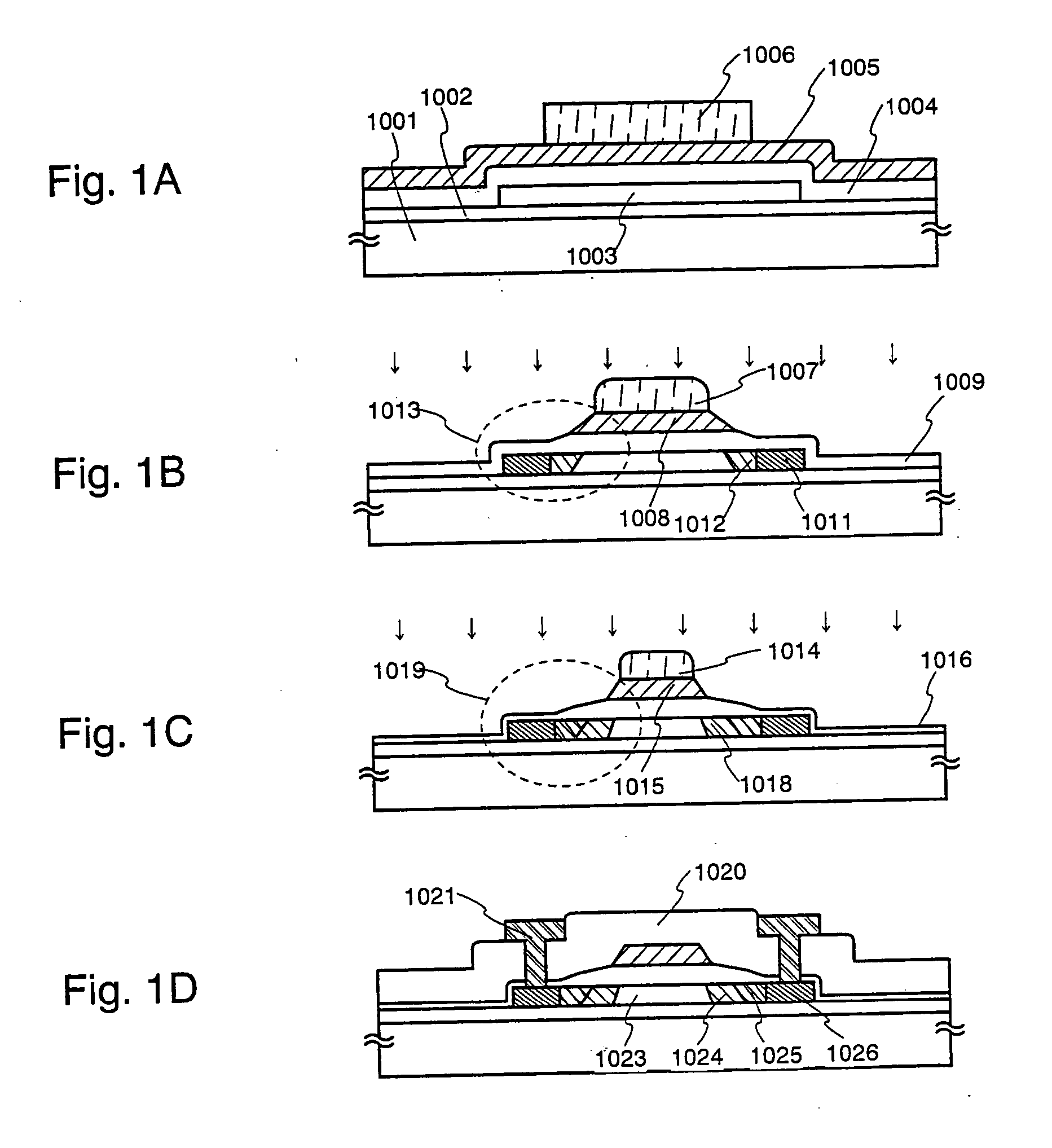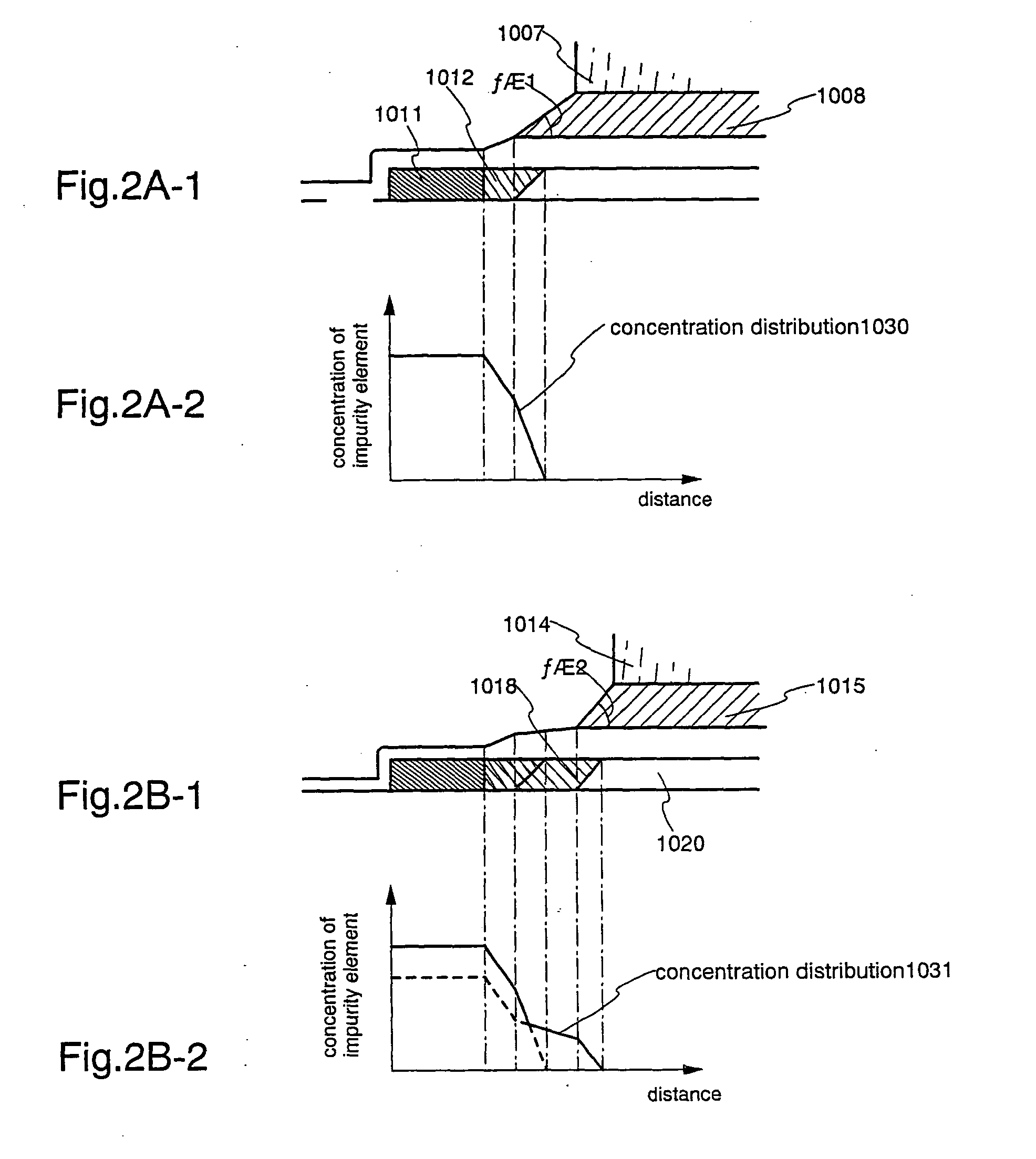Semiconductor device and manufacturing method thereof
a semiconductor and manufacturing method technology, applied in the field of semiconductor devices, can solve the problems of increasing the number of process steps, the inability to use the semiconductor devices to form a driver circuit for performing image display, and the complexity of the manufacturing process
- Summary
- Abstract
- Description
- Claims
- Application Information
AI Technical Summary
Benefits of technology
Problems solved by technology
Method used
Image
Examples
embodiment 1
[0104] [Embodiment 1]
[0105] An Embodiment of the present invention is explained using FIGS. 3A to 5B. A method of manufacturing a pixel TFT and a storage capacitor of a pixel portion, and a driver circuit TFT formed in the periphery of the pixel portion, at the same time is explained in detail here in accordance with process steps.
[0106] In FIG. 3A, a glass substrate such as barium borosilicate glass or aluminum borosilicate glass, typically Corning Corp. #7059 or #1737 glass, or a quartz substrate is used as a substrate 101. When using a glass substrate, heat treatment may be performed in advance at a temperature between 10 and 20EC below the distortion temperature of the glass. A base film 102 is then formed from an insulating film such as a silicon oxide film, a silicon nitride film, or a silicon nitride oxide film on the surface of the substrate 101 on which a TFT will be formed, in order to prevent impurity element diffusion. For example, a lamination of a silicon nitride oxide...
embodiment 2
[0145] [Embodiment 2]
[0146] Examples of using heat-resistant conductive materials such as W and Ta as materials for the gate electrode were shown in Embodiment 1. The reason for using these materials resides in that it is necessary to activate the impurity element that was doped into the semiconductor layer for the purpose of controlling the conductive type after the formation of the gate electrode by thermal annealing at between 400.degree. C. and 700.degree. C. By implementing this step, it is necessary that the gate electrode has heat-resistivity. However, this type of heat-resistant conductive material has a sheet resistivity of about 10 W, and hence is not always suitable for a display device having a screen size of a 4-inch class or more. This is because if a gate wiring to be connected to the gate electrode is formed of the same material, then the length of the lead wiring on the substrate inevitably becomes large. Thus, the problem of a wiring delay caused by the influence o...
embodiment 3
[0151] [Embodiment 3]
[0152] The active matrix substrate manufactured in Embodiment 1 is applicable for a reflection type display device as it is. On the other hand, in the case of applying it to a transmission type liquid crystal display device, it is appropriate to form the pixel electrodes provided in each pixel of the pixel portion with transparent electrodes. A method of manufacturing an active matrix substrate corresponding to the transmission type liquid crystal display device is explained in Embodiment 3 with references to FIG. 10.
[0153] The active matrix substrate is manufactured in the same way as Embodiment 1. In FIG. 10A, a conductive metallic film is formed by sputtering or vacuum evaporation to form a source wiring and a drain wiring. This structure will be explained in detail with reference to FIG. 10B using the drain wiring 256 as an example. A Ti film 256a is formed at a thickness of between 50 and 150 nm, and then a contact is formed with a semiconductor film that f...
PUM
 Login to View More
Login to View More Abstract
Description
Claims
Application Information
 Login to View More
Login to View More - R&D
- Intellectual Property
- Life Sciences
- Materials
- Tech Scout
- Unparalleled Data Quality
- Higher Quality Content
- 60% Fewer Hallucinations
Browse by: Latest US Patents, China's latest patents, Technical Efficacy Thesaurus, Application Domain, Technology Topic, Popular Technical Reports.
© 2025 PatSnap. All rights reserved.Legal|Privacy policy|Modern Slavery Act Transparency Statement|Sitemap|About US| Contact US: help@patsnap.com



